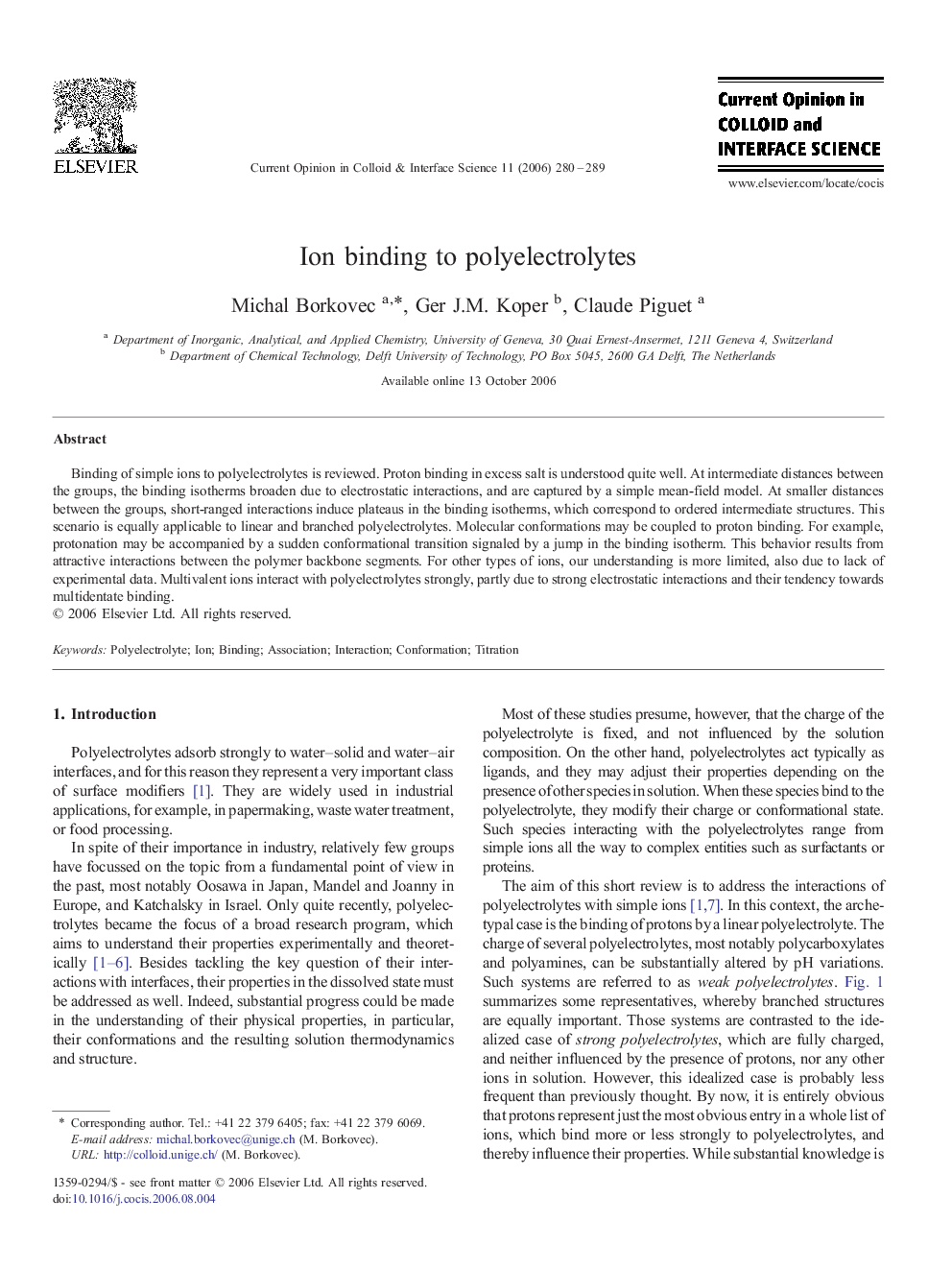| Article ID | Journal | Published Year | Pages | File Type |
|---|---|---|---|---|
| 603854 | Current Opinion in Colloid & Interface Science | 2006 | 10 Pages |
Binding of simple ions to polyelectrolytes is reviewed. Proton binding in excess salt is understood quite well. At intermediate distances between the groups, the binding isotherms broaden due to electrostatic interactions, and are captured by a simple mean-field model. At smaller distances between the groups, short-ranged interactions induce plateaus in the binding isotherms, which correspond to ordered intermediate structures. This scenario is equally applicable to linear and branched polyelectrolytes. Molecular conformations may be coupled to proton binding. For example, protonation may be accompanied by a sudden conformational transition signaled by a jump in the binding isotherm. This behavior results from attractive interactions between the polymer backbone segments. For other types of ions, our understanding is more limited, also due to lack of experimental data. Multivalent ions interact with polyelectrolytes strongly, partly due to strong electrostatic interactions and their tendency towards multidentate binding.
